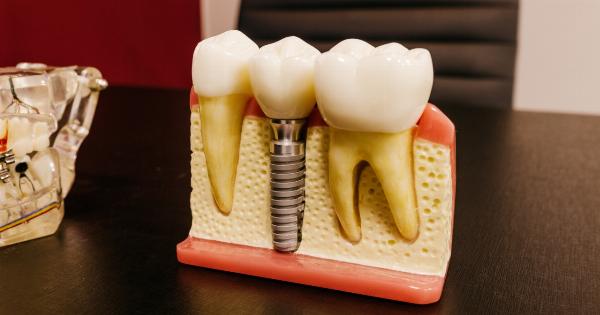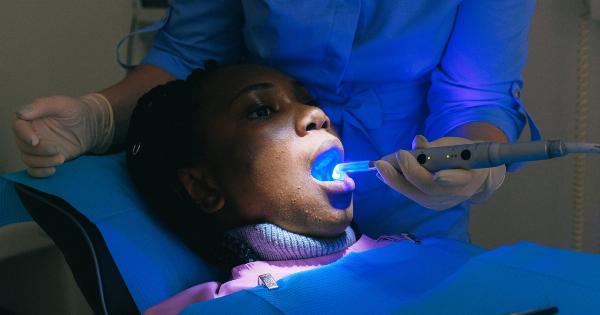Sialolithiasis is a common condition that affects the salivary glands in the mouth. It occurs when calcium deposits, also known as stones, form in the ducts that carry saliva from the glands to the mouth.
As these stones grow larger, they can block the flow of saliva and cause a range of painful symptoms.
Symptoms of Sialolithiasis
The symptoms of sialolithiasis can vary depending on the size and location of the stone. Some of the most common symptoms include:.
- Pain and swelling in the affected gland
- Dry mouth
- Bitter or metallic taste in the mouth
- Difficulty opening the mouth
- Difficulty eating or speaking
- Redness or inflammation in the affected area
Causes of Sialolithiasis
Although the exact cause of sialolithiasis is not known, experts believe that it may occur due to a combination of factors, including:.
- Dehydration
- Infectious diseases
- Medication use
- Genetic factors
- Blockages in the ducts due to injury or other damage
Diagnosis and Treatment
The diagnosis of sialolithiasis typically involves a physical exam, which may include palpating the affected gland, as well as imaging tests such as CT scans or ultrasounds. Once a diagnosis is made, treatment may involve:.
- Drinking plenty of fluids to help flush out the stone
- Taking medications to reduce pain and inflammation
- Using warm compresses or massaging the affected gland to help loosen the stone
- Undergoing a minimally-invasive procedure to remove the stone, such as sialendoscopy or lithotripsy
Possible Complications of Sialolithiasis
If left untreated, sialolithiasis can lead to a range of complications, including:.
- Recurrent infections in the affected gland
- Persistent dry mouth, which can lead to tooth decay and oral infections
- Nerve damage in the affected area
- Difficulty eating or speaking
- Chronic pain and inflammation
Preventing Sialolithiasis
Although there is no guaranteed way to prevent sialolithiasis, there are some steps that you can take to reduce your risk of developing this condition, including:.
- Drinking plenty of fluids to stay hydrated
- Avoiding medications that can cause dry mouth as a side effect
- Practicing good oral hygiene, including brushing and flossing regularly
- Getting regular dental checkups to catch early signs of tooth decay or gum disease
- Avoiding smoking or using other tobacco products
Conclusion
Sialolithiasis can be a painful and frustrating condition, but with prompt diagnosis and treatment, most people are able to find relief from their symptoms.
If you are experiencing any of the symptoms associated with sialolithiasis, it’s important to talk to your doctor or dentist right away to determine the underlying cause and develop an effective treatment plan. With the right care, you can get back to feeling comfortable and confident in your smile once again.

























